The role of Computer Science in Sustainable living
April 27, 2025 It is claimed that the transition to renewable energy relies heavily on computer science, and a significant proliferation of plants being AI-driven duo to a brighter future to seek for better living quality is irrefutable nowadays. This article will delve into the challenges and propose effective solutions that individuals, businesses, and governments can implement to enhance the quality of life for urban residents by embracing computational advancements contributing to working together to build a future where technology and ecology thrive in harmony. To begin with, this part of the essay depicts the analysis of the affected fields of the stance. Not only is difficulty exacerbating for each industry that can be enhanced by sustainable solutions through AI and machine learning for settlers of the world irrefutable should a proliferation of people be AI-driven, but also it is discernible that most folks are required to become accustomed to enhanced urban systems of living. The transition to renewable energy relies heavily on computer science. 1.Energy Efficiency and Smart Grids Smart grids, powered by artificial intelligence (AI) and machine learning (ML), optimize electricity distribution by balancing supply and demand in real time. These systems reduce energy waste, integrate renewable sources like solar and wind more efficiently, and lower carbon emissions. Additionally, smart home technologies—such as AI-driven thermostats and energy-monitoring systems—help households minimize energy consumption by learning user patterns and adjusting settings automatically. 2.Optimizing Resource Use with Data Analytics One of the most significant ways computer science supports sustainable living is through data analytics. Advanced algorithms process vast amounts of data to optimize resource consumption across sectors like energy, agriculture, and water management. For instance, smart grids use real-time data to balance electricity demand and supply, reducing energy waste and integrating renewable sources like solar and wind. Machine learning models predict energy usage patterns, enabling utilities to adjust production dynamically and minimize reliance on fossil fuels. Sustainable Agriculture by Leveraging Sensors, Drones, and Data Analytics in Farming By leveraging sensors, drones, and data analytics, farmers can monitor soil conditions, crop health, and weather patterns with high accuracy. This reduces the need for excessive water, fertilizers, and pesticides, leading to more sustainable food production. Machine learning models also predict crop yields and disease outbreaks, helping farmers make informed decisions that enhance productivity while minimizing environmental impact. Examples of significant ways that computer science supports sustainable living through data analytics) Sensors collect data on soil moisture, weather, and crop health, which algorithms analyze to recommend optimal irrigation and fertilization schedules. This reduces water and chemical usage, preserves soil health, and boosts crop yields. According to studies, precision agriculture can cut water use by up to 30% and increase productivity by 20%, demonstrating the tangible benefits of data-driven approaches. Computer science, through data analytics, plays a pivotal role in advancing sustainable living by optimizing resource use, reducing environmental impact, and enhancing system efficiency across various sectors beyond agriculture. Below, I delve into three key examples—energy management, water resource management, and waste management—exploring how data analytics drives sustainability in these areas. Each example includes a detailed explanation of the mechanisms, technologies, and impacts, tailored to deepen your professional understanding. Energy Management: Smart Grids and Demand Response Systems Overview: Data analytics is revolutionizing energy management by enabling smart grids and demand response systems that optimize electricity distribution, integrate renewables, and reduce carbon emissions. These systems use real-time data to balance supply and demand, minimize waste, and enhance energy efficiency. Mechanisms and Technologies: Smart Grids: These are electricity networks that use IoT sensors, advanced metering infrastructure (AMI), and data analytics to monitor and manage energy flow. Sensors collect data on consumption, grid performance, and renewable energy inputs (e.g., solar or wind). Machine learning algorithms analyze this data to predict demand patterns, detect anomalies (e.g., equipment failures), and optimize distribution. Demand Response Systems: These systems incentivize consumers to reduce or shift electricity usage during peak periods. Data analytics models forecast peak demand using historical consumption data, weather patterns, and economic factors. Algorithms then send signals to smart appliances or industrial systems to adjust usage automatically, balancing the grid. Predictive Maintenance: Data ana
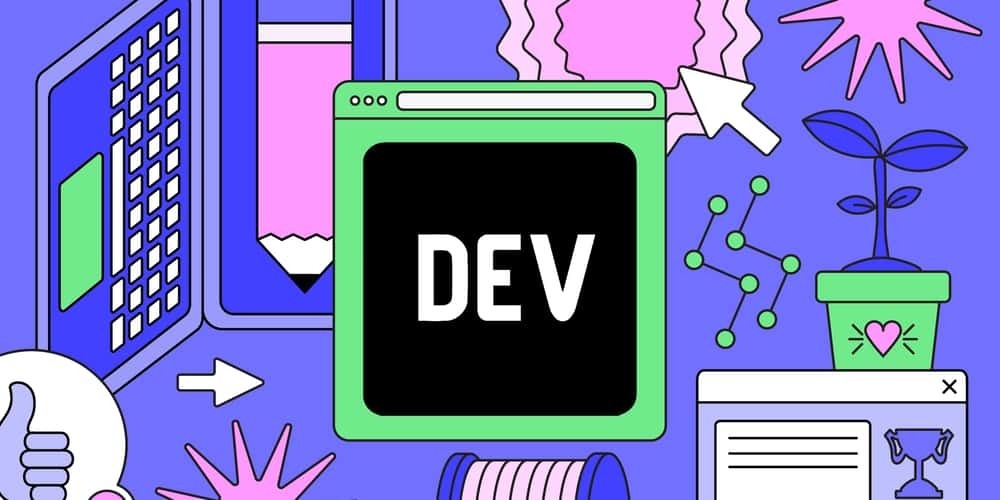
April 27, 2025
It is claimed that the transition to renewable energy relies heavily on computer science, and a significant proliferation of plants being AI-driven duo to a brighter future to seek for better living quality is irrefutable nowadays. This article will delve into the challenges and propose effective solutions that individuals, businesses, and governments can implement to enhance the quality of life for urban residents by embracing computational advancements contributing to working together to build a future where technology and ecology thrive in harmony.
To begin with, this part of the essay depicts the analysis of the affected fields of the stance. Not only is difficulty exacerbating for each industry that can be enhanced by sustainable solutions through AI and machine learning for settlers of the world irrefutable should a proliferation of people be AI-driven, but also it is discernible that most folks are required to become accustomed to enhanced urban systems of living.
The transition to renewable energy relies heavily on computer science.
1.Energy Efficiency and Smart Grids
Smart grids, powered by artificial intelligence (AI) and machine learning (ML), optimize electricity distribution by balancing supply and demand in real time. These systems reduce energy waste, integrate renewable sources like solar and wind more efficiently, and lower carbon emissions.
Additionally, smart home technologies—such as AI-driven thermostats and energy-monitoring systems—help households minimize energy consumption by learning user patterns and adjusting settings automatically.
2.Optimizing Resource Use with Data Analytics
One of the most significant ways computer science supports sustainable living is through data analytics. Advanced algorithms process vast amounts of data to optimize resource consumption across sectors like energy, agriculture, and water management. For instance, smart grids use real-time data to balance electricity demand and supply, reducing energy waste and integrating renewable sources like solar and wind. Machine learning models predict energy usage patterns, enabling utilities to adjust production dynamically and minimize reliance on fossil fuels.
Sustainable Agriculture by Leveraging Sensors, Drones, and Data Analytics in Farming
By leveraging sensors, drones, and data analytics, farmers can monitor soil conditions, crop health, and weather patterns with high accuracy. This reduces the need for excessive water, fertilizers, and pesticides, leading to more sustainable food production.
Machine learning models also predict crop yields and disease outbreaks, helping farmers make informed decisions that enhance productivity while minimizing environmental impact.
Examples of significant ways that computer science supports sustainable living through data analytics)
Sensors collect data on soil moisture, weather, and crop health, which algorithms analyze to recommend optimal irrigation and fertilization schedules. This reduces water and chemical usage, preserves soil health, and boosts crop yields. According to studies, precision agriculture can cut water use by up to 30% and increase productivity by 20%, demonstrating the tangible benefits of data-driven approaches.
Computer science, through data analytics, plays a pivotal role in advancing sustainable living by optimizing resource use, reducing environmental impact, and enhancing system efficiency across various sectors beyond agriculture. Below, I delve into three key examples—energy management, water resource management, and waste management—exploring how data analytics drives sustainability in these areas. Each example includes a detailed explanation of the mechanisms, technologies, and impacts, tailored to deepen your professional understanding.
Energy Management: Smart Grids and Demand Response Systems
Overview: Data analytics is revolutionizing energy management by enabling smart grids and demand response systems that optimize electricity distribution, integrate renewables, and reduce carbon emissions. These systems use real-time data to balance supply and demand, minimize waste, and enhance energy efficiency.
Mechanisms and Technologies:
Smart Grids: These are electricity networks that use IoT sensors, advanced metering infrastructure (AMI), and data analytics to monitor and manage energy flow. Sensors collect data on consumption, grid performance, and renewable energy inputs (e.g., solar or wind). Machine learning algorithms analyze this data to predict demand patterns, detect anomalies (e.g., equipment failures), and optimize distribution.
Demand Response Systems: These systems incentivize consumers to reduce or shift electricity usage during peak periods. Data analytics models forecast peak demand using historical consumption data, weather patterns, and economic factors. Algorithms then send signals to smart appliances or industrial systems to adjust usage automatically, balancing the grid.
Predictive Maintenance: Data analytics identifies potential grid failures by analyzing sensor data for patterns indicative of wear or inefficiency. This reduces downtime and prevents energy losses from faulty equipment.
Renewable Integration: Machine learning models predict the intermittent output of renewable sources (e.g., solar output based on cloud cover). This enables utilities to balance renewable and non-renewable sources dynamically, reducing reliance on fossil fuels.
Professional Insights:
Algorithms in Use: Time-series forecasting models (e.g., ARIMA, LSTM neural networks) predict consumption and renewable generation. Reinforcement learning optimizes grid operations by learning from real-time feedback. Anomaly detection algorithms (e.g., Isolation Forests) identify inefficiencies or faults.
Data Sources: Smart meters provide granular consumption data (e.g., 15-minute intervals), while weather APIs supply environmental variables. Grid sensors monitor voltage, current, and frequency.
Scalability: Cloud-based platforms like AWS or Azure host these analytics, enabling real-time processing of petabytes of data from millions of devices.
Impact Metrics: Smart grids can reduce energy losses by 10-15% and cut greenhouse gas emissions by integrating renewables more effectively. For example, the U.S. Department of Energy estimates that full smart grid deployment could save 12-18% of electricity consumption by 2030.
Case Study: In California, Pacific Gas and Electric (PG&E) uses data analytics to manage its smart grid, incorporating 50% renewable energy. Predictive models balance solar and wind inputs, while demand response programs shift 500 MW of load during peak times, reducing coal plant usage.
Challenges: High computational costs of real-time analytics require energy-efficient algorithms. Data privacy concerns arise from smart meter data, necessitating robust encryption and compliance with regulations like GDPR or CCPA.Water Resource Management: Leak Detection and Usage Optimization
Overview: Data analytics supports sustainable water management by detecting leaks, predicting demand, and optimizing distribution in urban and industrial systems. This is critical in addressing water scarcity, as 20% of global freshwater is lost to leaks or inefficient use.
Mechanisms and Technologies:
Leak Detection: IoT sensors in water pipelines measure pressure, flow, and acoustic signals. Data analytics algorithms, such as clustering or neural networks, identify anomalies indicative of leaks. For example, a sudden drop in pressure or unusual acoustic patterns triggers alerts for maintenance crews.
Demand Forecasting: Machine learning models analyze historical water usage, population growth, weather data, and industrial activity to predict demand. This enables utilities to adjust supply, reducing over-pumping and energy-intensive treatment processes.
Distribution Optimization: Graph-based algorithms model water networks as nodes (e.g., reservoirs, pumps) and edges (pipes). Optimization techniques, like linear programming, minimize energy use in pumping while ensuring equitable distribution.
Consumer Insights: Smart meters at households or businesses provide granular usage data. Analytics platforms generate personalized recommendations, such as fixing leaks or reducing irrigation, delivered via apps or utility bills.
Professional Insights:
Algorithms in Use: Convolutional neural networks (CNNs) process acoustic data for leak detection, achieving 95% accuracy in some systems. Gradient boosting models (e.g., XGBoost) excel in demand forecasting by handling nonlinear relationships. Mixed-integer programming optimizes pump schedules.
Data Sources: SCADA (Supervisory Control and Data Acquisition) systems provide real-time pipeline data. Satellite imagery and GIS data map water infrastructure and detect surface leaks. Consumer data comes from AMI systems.
Scalability: Edge computing reduces latency by processing sensor data locally, while cloud platforms integrate city-wide analytics. Open-source frameworks like TensorFlow or PyTorch are commonly used for model development.
Impact Metrics: Leak detection systems can reduce water losses by 20-30%. For example, Singapore’s PUB utility saved 10 million gallons daily through analytics-driven leak management. Optimized distribution cuts energy use in water treatment by 15%.
Case Study: In Las Vegas, the Southern Nevada Water Authority uses data analytics to manage water in a desert region. Machine learning detects leaks within hours, and demand models adjust supply for 2.3 million residents, saving 5 billion gallons annually.
Challenges: Sensor deployment in aging infrastructure is costly. False positives in leak detection require hybrid models combining physics-based and data-driven approaches. Equitable access to smart metering is critical to avoid excluding low-income communities.Waste Management: Recycling Optimization and Illegal Dumping Detection
Overview: Data analytics enhances waste management by improving recycling efficiency, predicting waste generation, and detecting illegal dumping. This supports circular economies, reducing landfill use and environmental pollution.
Mechanisms and Technologies:
Recycling Optimization: Computer vision and AI classify waste materials in sorting facilities. Cameras capture images of waste on conveyor belts, and deep learning models (e.g., YOLO, ResNet) identify plastics, metals, or organics with 90%+ accuracy. This automates sorting, increasing recycling rates and reducing contamination.
Waste Generation Forecasting: Time-series models predict waste volumes based on population, consumption patterns, and seasonal trends. This informs collection schedules, reducing fuel use in waste trucks and preventing overflow at bins.
Illegal Dumping Detection: Satellite imagery, drone data, or IoT sensors monitor high-risk areas. Machine learning classifies unusual waste piles or chemical signatures, triggering enforcement actions. Geospatial analytics map dumping hotspots for targeted interventions.
Behavioral Nudging: Analytics platforms analyze household recycling data to provide feedback, such as gamified apps rewarding proper sorting. Predictive models identify low-compliance areas for educational campaigns.
Professional Insights:
Algorithms in Use: Deep learning (e.g., CNNs) powers computer vision for sorting. ARIMA or Prophet models forecast waste generation. Spatial clustering (e.g., DBSCAN) identifies dumping patterns. Natural language processing (NLP) analyzes community feedback on waste programs.
Data Sources: IoT bins report fill levels. Recycling facility cameras provide visual data. GIS and satellite data (e.g., Sentinel-2 imagery) support dumping detection. Municipal records supply demographic and waste data.
Scalability: Real-time sorting requires GPU-accelerated systems for low-latency processing. Cloud platforms integrate multi-source data for city-wide analytics. APIs from waste management firms (e.g., Waste Management Inc.) streamline data access.
Impact Metrics: AI sorting boosts recycling rates by 25-30%. Optimized collection cuts fuel use by 15%. Seoul’s AI sorting systems increased recycling from 46% to 60% in five years. Dumping detection reduces cleanup costs by 20%.
Case Study: In San Francisco, Recology uses AI-driven sorting to process 600 tons of recyclables daily. Analytics predicts waste volumes, optimizing 100+ truck routes, while drone-based dumping detection saves $1 million annually in cleanup.
Challenges: High upfront costs for AI sorting systems limit adoption in developing regions. Data biases (e.g., underreporting in low-income areas) skew predictions. Public trust in surveillance-based dumping detection requires transparent governance.
Broader Implications and Future Directions
Cross-Sector Synergies: Data analytics in these areas often integrates with other systems. For example, energy and water analytics inform each other in smart cities, where water pumping aligns with renewable energy peaks. Waste and energy analytics converge in waste-to-energy plants, where predictive models optimize incineration.
Emerging Technologies:
Federated Learning: Enables privacy-preserving analytics by training models on decentralized data (e.g., smart meters), critical for consumer trust.
Digital Twins: Virtual models of grids, water networks, or waste systems simulate scenarios, improving decision-making. For instance, a digital twin of a city’s water system predicts drought impacts.
Quantum Computing: Emerging quantum algorithms could solve complex optimization problems (e.g., grid balancing) faster, though practical applications are 5-10 years away.
Policy and Ethics:
Data Governance: Standardized protocols for data sharing (e.g., Open Data initiatives) enhance interoperability but require cybersecurity measures.
Equity: Ensuring analytics benefits marginalized communities is critical. For example, subsidized smart meters can bridge access gaps.
Carbon Footprint: Analytics platforms must minimize their own energy use through green computing practices, such as carbon-neutral data centers.
Future Trends:
By 2030, 80% of utilities are projected to adopt AI-driven analytics, per Gartner.
Integration with 5G will enable ultra-low-latency IoT analytics, enhancing real-time sustainability solutions.
Citizen science platforms will crowdsource data (e.g., water quality reports), augmenting analytics with community insights.
Conclusion
Data analytics, powered by computer science, is a cornerstone of sustainable living, driving efficiency and resilience in energy, water, and waste management. Smart grids reduce emissions through predictive balancing, water analytics combat scarcity via leak detection, and waste analytics promote circular economies with AI sorting. These applications rely on sophisticated algorithms, scalable infrastructure, and multi-source data, offering measurable environmental benefits. However, challenges like cost, equity, and computational footprints require ongoing innovation and ethical governance. By deepening your understanding of these mechanisms, you can better appreciate the transformative potential of data analytics in building a sustainable future.
2.Waste Reduction and Circular Economy
Computer science fosters circular economies, where resources are reused and recycled to minimize waste.
AI-powered waste sorting systems, equipped with computer vision and robotics, identify and separate recyclables with high accuracy, reducing landfill waste. In cities like Seoul, such systems have increased recycling rates significantly. Automated recycling plants use AI to separate materials more efficiently than manual methods, increasing recycling rates and reducing landfill waste.
Blockchain technology, for instance, ensures transparency in supply chains, tracking materials from production to disposal. Consumers and businesses can track the lifecycle of products, ensuring responsible sourcing, recycling, and reuse of materials. This enables companies to design products for recyclability and verify sustainable sourcing.
Digital platforms also encourage sustainable consumer behavior. Apps that promote second-hand marketplaces, food-sharing, or repair services reduce waste and extend product lifecycles. Machine learning algorithms personalize recommendations, nudging users toward eco-friendly choices, such as plant-based diets or low-carbon products.
- Climate Modeling and Environmental Monitoring Advanced computational models help scientists predict climate change impacts with greater accuracy. High-performance computing (HPC) simulates complex environmental systems, allowing researchers to assess the effects of policy changes, deforestation, and carbon emissions. IoT (Internet of Things) devices and satellite imaging provide real-time data on deforestation, ocean health, and air quality. This information is crucial for governments and organizations to implement effective conservation strategies.
- Green Software and Low-Power Computing The tech industry itself is moving toward sustainability with energy-efficient algorithms and green software engineering. Developers are optimizing code to reduce computational power requirements, while cloud providers are shifting to renewable energy sources for data centers. Low-power devices, such as those used in IoT networks, extend battery life and decrease electronic waste. Innovations like edge computing also minimize energy consumption by processing data locally instead of relying on distant servers. **AI code agent (specific optimizer) --> optimizes code --> reduce computational power Green Software and Low-Power Computing: A Deep Dive into Sustainable Technology As the world grapples with climate change and resource depletion, the technology sector faces increasing scrutiny for its environmental impact. Data centers, computing devices, and software applications consume vast amounts of energy, contributing to global carbon emissions. Green software and low-power computing have emerged as critical strategies to mitigate this impact, prioritizing energy efficiency and sustainability without sacrificing performance. This article explores the principles, practices, and innovations driving green software and low-power computing, with a focus on their role in fostering a sustainable tech future. It also highlights future research directions and actionable ways individuals and organizations can contribute to this transformation.
Understanding Green Software
Green software refers to software designed, developed, and deployed to minimize environmental impact, primarily by reducing energy consumption and carbon emissions. Unlike traditional software, which prioritizes performance and user experience, green software integrates sustainability as a core metric. It aligns with the principles of green computing, which seeks to create environmentally responsible technology ecosystems.
Key Principles of Green Software
. Energy Efficiency: Optimize code to reduce computational resources, lowering energy use during execution.
. Carbon Awareness: Design software to leverage low-carbon energy sources (e.g., running workloads when renewable energy is abundant).
. Hardware Longevity: Minimize resource-intensive updates to extend device lifespans and reduce e-waste.
. Scalability with Minimal Impact: Ensure software remains efficient as user bases or data volumes grow.
Practices in Green Software Development
. Efficient Algorithms: Choosing algorithms with lower time and space complexity reduces CPU and memory usage. For example, replacing a quadratic algorithm (O(n²)) with a linear one (O(n)) can cut energy consumption significantly.
. Lightweight Frameworks: Using minimalist frameworks (e.g., Flask instead of Django for Python web apps) reduces resource demands.
. Cloud Optimization: Leveraging serverless architectures and auto-scaling in cloud platforms like AWS Lambda minimizes idle resource usage.
. Carbon-Aware Scheduling: Tools like Kubernetes Carbon Intensity Scheduler shift workloads to data centers powered by renewables, reducing carbon footprints.
. Code Profiling: Tools like GreenFrame or PowerAPI measure energy consumption during development, identifying inefficiencies.
Impact: According to the Green Software Foundation, optimizing software can reduce energy consumption by 20-50% in some applications, translating to lower emissions and operational costs.
Low-Power Computing: Hardware-Software Synergy
Low-power computing focuses on designing hardware and software that operate with minimal energy while maintaining functionality. It is particularly critical in data centers, mobile devices, and IoT ecosystems, where energy demands are high.
Techniques in Low-Power Computing
. Energy-Efficient Hardware:
- ARM Architecture: ARM processors, used in smartphones and IoT devices, consume less power than traditional x86 architectures, making them ideal for edge computing.
- Dynamic Voltage and Frequency Scaling (DVFS): Adjusts processor voltage and clock speed based on workload, reducing power use during low-demand periods.
- Specialized Chips: ASICs (Application-Specific Integrated Circuits) and TPUs (Tensor Processing Units) optimize tasks like AI training, consuming less energy than general-purpose CPUs. . Software Optimization:
- Idle State Management: Operating systems like Linux use power-saving modes (e.g., C-states) to minimize energy use when devices are idle.
- Task Offloading: Edge computing shifts processing from energy-intensive cloud servers to local devices, reducing network energy costs.
- Compression: Data compression techniques (e.g., gzip for web assets) reduce transmission energy in networked applications. . Virtualization and Containerization: Technologies like Docker and Kubernetes consolidate workloads on fewer servers, improving resource utilization and reducing data center power needs. Impact: Low-power computing can cut data center energy use by 30-40%, according to studies by the Uptime Institute. For mobile devices, techniques like DVFS extend battery life by 20-50%, reducing charging frequency and associated emissions. Case Study: Google’s Data Centers Google has implemented green software and low-power computing to achieve carbon-neutral operations. Its DeepMind AI optimizes cooling in data centers, reducing energy use by 40%. Carbon-aware load balancing shifts workloads to regions with abundant renewable energy, cutting emissions. Additionally, Google uses custom TPUs for AI tasks, which are 10x more energy-efficient than GPUs for specific workloads. Challenges in Green Software and Low-Power Computing Despite their promise, these approaches face hurdles: . Performance Trade-offs: Energy-efficient algorithms may sacrifice speed, requiring careful design to meet user expectations. . Measurement Complexity: Quantifying software’s carbon footprint is challenging due to varying hardware, energy sources, and usage patterns. . Adoption Barriers: Small organizations may lack resources to adopt green practices, and legacy systems are often incompatible with modern efficiency techniques. . Energy-Intensive AI: Training large AI models, like those powering generative AI, can emit as much CO2 as a transatlantic flight, necessitating greener AI frameworks. Addressing these challenges requires innovation, standardization (e.g., ISO 14040 for lifecycle assessments), and industry-wide collaboration. Future Innovations & Research Directions for a Brighter, Sustainable Future The future of green software and low-power computing holds transformative potential to align technology with planetary boundaries. Research and innovation are paving the way for a brighter, sustainable future by addressing current limitations and scaling impact. Key directions include: . Carbon-Intelligent Computing:
- Research Focus: Developing algorithms that dynamically adapt to carbon intensity data from energy grids. Projects like the Open Carbon Data initiative aim to standardize carbon-aware APIs.
- Sustainability Impact: Shifting 50% of cloud workloads to low-carbon regions could reduce emissions by 25%, per Microsoft’s research, fostering a future where computing aligns with renewable energy availability.
. Energy-Proportional Systems:
- Research Focus: Designing hardware and software that scale energy use linearly with workload, eliminating idle power waste. MIT’s work on “zero-power” sensors explores this concept.
- Sustainability Impact: Energy-proportional data centers could save 20-30% of global computing energy, enabling scalable, eco-friendly infrastructure. . Green AI Frameworks:
- Research Focus: Optimizing AI training through techniques like model pruning, quantization, and federated learning. Google’s EfficientNet and Meta’s PyTorch Green AI toolkit are early examples.
- Sustainability Impact: Reducing AI’s carbon footprint by 50-70% supports sustainable innovation in fields like climate modeling and smart cities. . Quantum Computing for Optimization:
- Research Focus: Quantum algorithms for solving complex optimization problems (e.g., energy grid balancing) with lower energy than classical computers. IBM and D-Wave are exploring quantum applications for sustainability.
- Sustainability Impact: Quantum solutions could cut computational energy for climate simulations by orders of magnitude, accelerating solutions for a warming planet. . Circular Computing Ecosystems:
- Research Focus: Designing software and hardware for reuse, repair, and recycling. The EU’s Right to Repair initiative and modular devices like Framework laptops align with this vision.
- Sustainability Impact: Extending device lifespans by 5 years could reduce e-waste by 20%, creating a circular tech economy that preserves resources. These innovations emphasize sustainability by prioritizing long-term environmental benefits, equitable access, and resilience. Collaborative research, supported by organizations like the Green Software Foundation and ACM’s Sustainability SIG, ensures these advancements drive a brighter, greener future. How You Can Contribute to a Sustainable Tech Future As a software and website developer myself, there are paths that I more gravitate towards to nowadays that are not just trends—they are necessities for a sustainable digital future. I code every single day with this state of mind, that the next frontier would be a world where every line of code is written with sustainability in mind—where software doesn’t just solve problems but does so without harming the planet. Here are the some practices I would recommend for my fellow peers: Best Practices for Sustainable Software Development: For Developers ✔ Write Efficient Code . Avoid redundant loops, use efficient data structures (e.g., hash maps over lists).
. Profile and optimize hot code paths (e.g., using Flame Graphs).
✔ Adopt Green Cloud Practices
. Use serverless computing (AWS Lambda, Google Cloud Functions) to scale dynamically.
. Choose cloud regions powered by renewables (e.g., Google’s carbon-neutral zones).
✔ Leverage Lightweight Frameworks
. Prefer Go/Rust over Python for performance-critical tasks.
. Use WASM (WebAssembly) for browser efficiency.
Individuals, developers, and organizations can play a vital role in advancing green software and low-power computing. Here are actionable steps to contribute:
. For Developers:
- Adopt Green Practices: Use energy profiling tools (e.g., CodeCarbon) to measure and optimize your code’s carbon footprint.
- Choose Efficient Tools: Opt for lightweight libraries and frameworks, and implement caching to reduce server loads.
- Advocate for Carbon Awareness: Integrate carbon-aware scheduling in cloud deployments using tools like AWS Carbon Footprint or Google Cloud’s Carbon Sense. . For Organizations:
- Invest in Green Infrastructure: Power data centers with renewables and adopt low-power hardware like ARM-based servers.
- Train Teams: Educate developers on green software principles through certifications like the Green Software Foundation’s training program.
- Set Sustainability Metrics: Include energy efficiency in KPIs, using standards like SPECpower for benchmarking.
- Implement Carbon-Aware DevOps: . Shift CI/CD workloads to low-carbon times. . Use tools like Cloud Carbon Footprint to monitor emissions.
- Encourage Sustainable AI: . Use model pruning, quantization, and TinyML to reduce AI energy costs.
. Prefer smaller, efficient models (e.g., DistilBERT over BERT).
- Promote Device Longevity: . Extend hardware lifespan via software updates (e.g., Apple’s iOS optimizations).
. Reduce e-waste by supporting repairability (e.g., Fairphone, Framework Laptop).
. For Individuals:
- Support Sustainable Tech: Choose devices with repairable designs (e.g., Fairphone) and recycle old electronics responsibly.
- Reduce Digital Waste: Minimize unnecessary cloud storage and delete unused apps to lower data center demand.
- Advocate for Change: Push for corporate transparency on tech’s environmental impact via platforms like X or consumer campaigns. . For Researchers and Educators:
- Advance Green Algorithms: Focus on low-energy AI and optimization techniques in academic research.
- Incorporate Sustainability in Curricula: Teach green computing principles in computer science programs to inspire the next generation. Impact of Collective Action: If 10% of developers adopt green practices, global IT emissions could drop by 5%, equivalent to removing 10 million cars from roads annually, per estimates from the International Energy Agency. Conclusion Green software and low-power computing are reshaping the tech landscape, offering pathways to reduce energy consumption, emissions, and e-waste. By optimizing algorithms, leveraging low-power hardware, and embracing carbon-aware practices, these approaches align innovation with environmental stewardship. Future innovations, from carbon-intelligent systems to quantum computing, promise a sustainable tech ecosystem that supports a brighter, greener future. Whether you’re a developer, organization, or individual, your contributions—through efficient coding, advocacy, or conscious consumption—can drive meaningful change. Together, we can build a tech-driven world that thrives within planetary boundaries, ensuring sustainability for generations to come. 6.Enabling Smart Cities and Transportation Computer science is at the heart of smart city initiatives, which aim to create urban environments that are efficient, livable, and environmentally friendly. Internet of Things (IoT) devices, coupled with machine learning, monitor and manage urban systems like traffic, waste, and energy. For example, smart traffic management systems analyze real-time traffic data to optimize signal timings, reducing congestion and vehicle emissions. Sustainable transportation also benefits from computer science. Algorithms power ride-sharing platforms and electric vehicle (EV) charging networks, making eco-friendly transport more accessible. Autonomous vehicles, guided by AI, promise to further reduce emissions by optimizing driving patterns and reducing accidents. Additionally, route optimization algorithms in logistics minimize fuel consumption for delivery fleets, contributing to lower greenhouse gas emissions. 7.Advancing Renewable Energy and Climate Modeling AI and machine learning improve the efficiency of solar panels and wind turbines by predicting weather patterns and optimizing energy capture. For example, Google’s DeepMind used AI to predict wind farm output 36 hours in advance, increasing the value of wind energy by 20%. Such innovations make renewables more reliable and cost-competitive, accelerating their adoption. Climate modeling is another critical area where computer science shines. Supercomputers run complex simulations to predict climate trends, assess the impact of human activities, and guide policy decisions. These models help governments and organizations plan for rising sea levels, extreme weather, and food security challenges. By providing actionable insights, computer science empowers stakeholders to implement proactive measures for climate resilience.
Challenges and Ethical Considerations
While computer science offers immense potential for sustainability, it also presents challenges. The energy consumption of data centers and AI training processes can be substantial, contributing to carbon emissions. Efforts are underway to address this, such as using renewable energy for data centers and developing energy-efficient algorithms. Additionally, ethical concerns like data privacy and equitable access to technology must be tackled to ensure that sustainable solutions benefit all communities.
The Path Forward
It can be envisioned that although the role of computer science in sustainable living is transformative, offering tools to optimize resources, reduce emissions, and foster resilient systems, from smart cities to renewable energy, its applications are diverse and impactful, however, maximizing its potential requires collaboration between technologists, policymakers, and communities to address challenges and ensure inclusive, ethical solutions.
As we face pressing environmental crises and myriad challenges, computer science provides a beacon of hope. By harnessing its capabilities, we can build a future where technology and sustainability hamoniously go hand in hand, creating a world that thrives for generations to come. However, through proactive governments, organizations, and developers interventions, I opine that it is possible to create more smart and equitable urban environments for all residents, with the production of plant-based diats and low-carbon-based foods, and people from all backgrounds have a chance to use apps that promote second-hand marketplaces, food-sharing, or repair services while reducing waste and extending product lifecycles.


















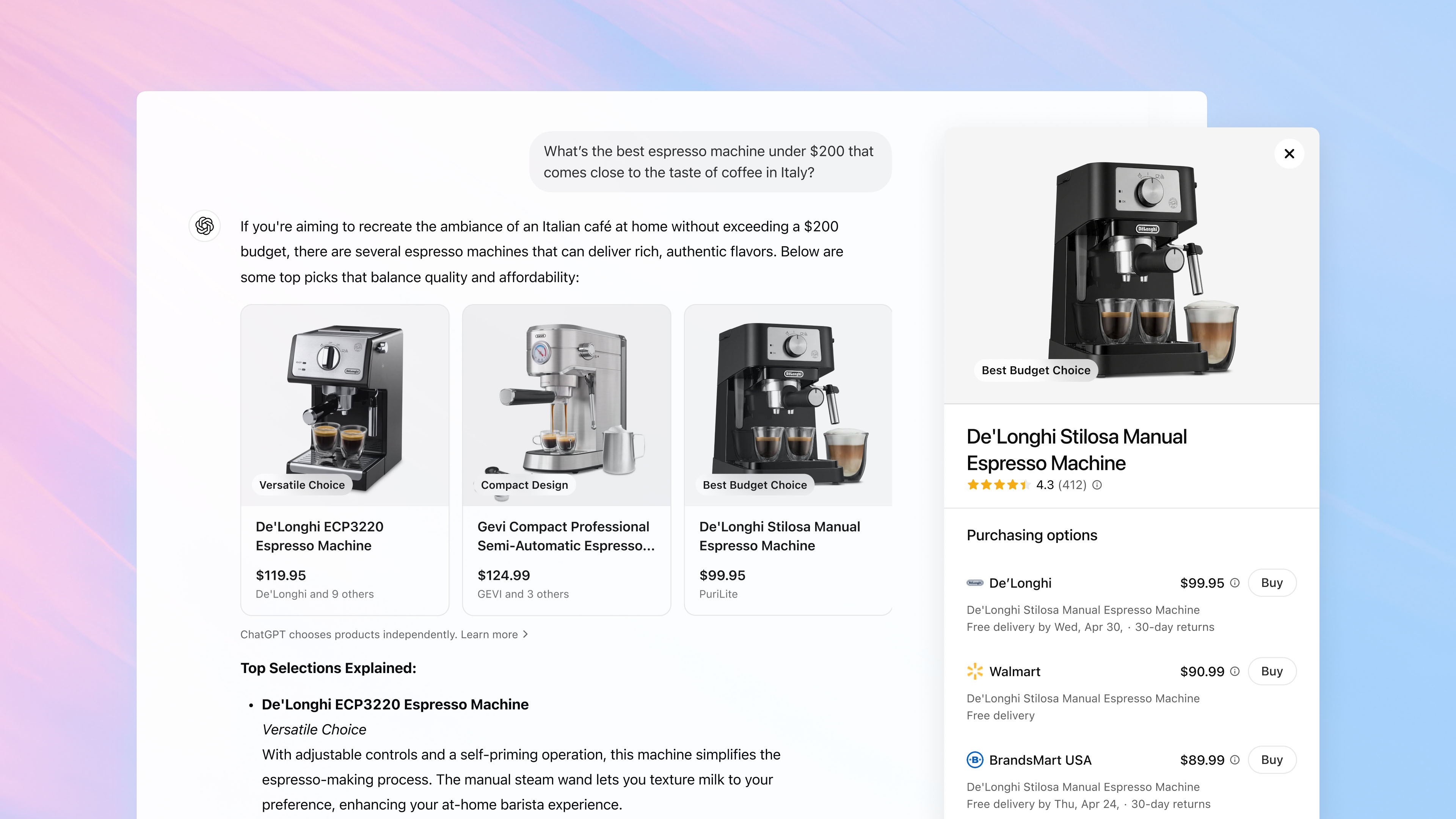






























.jpg)
















































































































![[The AI Show Episode 143]: ChatGPT Revenue Surge, New AGI Timelines, Amazon’s AI Agent, Claude for Education, Model Context Protocol & LLMs Pass the Turing Test](https://www.marketingaiinstitute.com/hubfs/ep%20143%20cover.png)





































































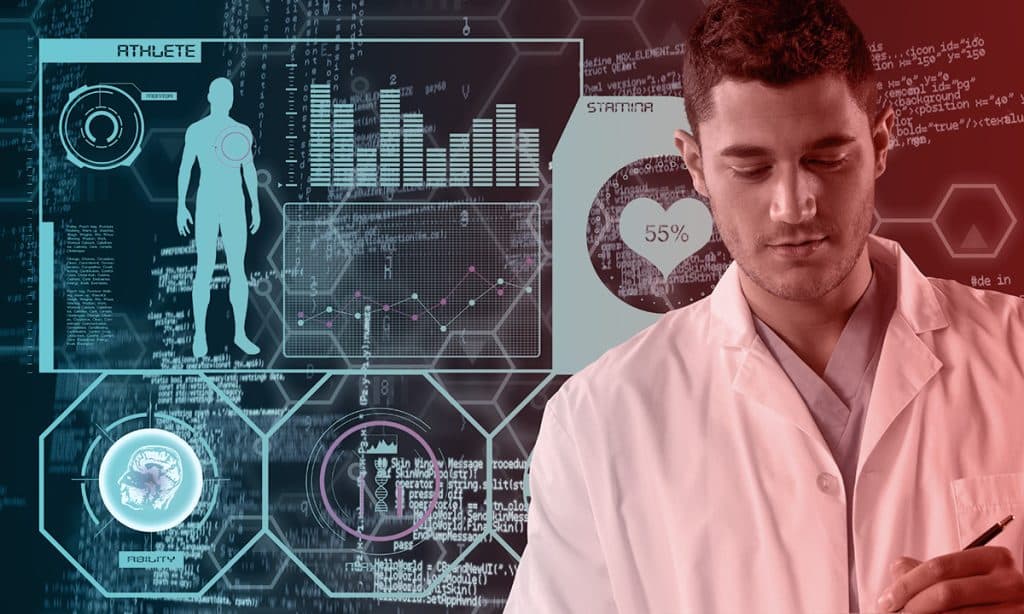









































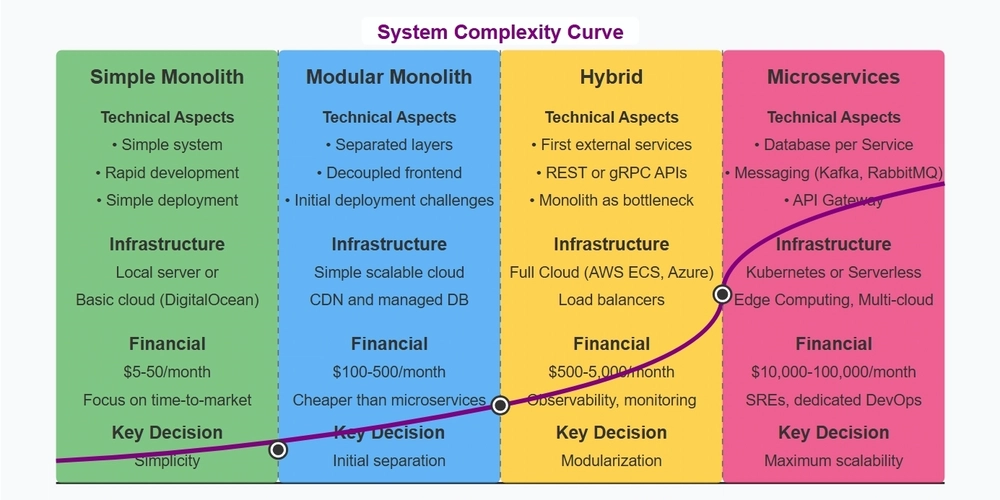
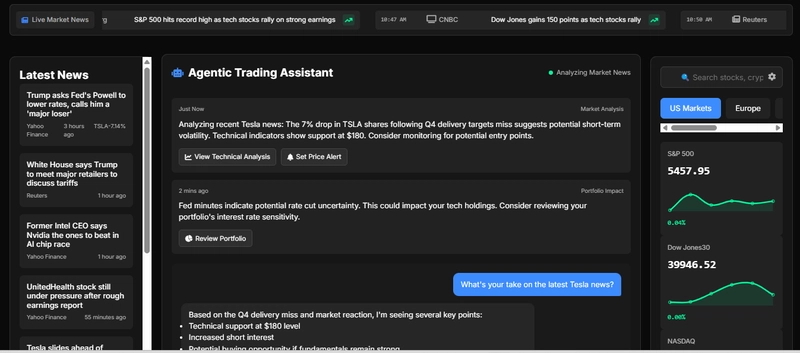































































.jpg?#)
































































.png?width=1920&height=1920&fit=bounds&quality=70&format=jpg&auto=webp#)
.png?width=1920&height=1920&fit=bounds&quality=70&format=jpg&auto=webp#)


























_Muhammad_R._Fakhrurrozi_Alamy.jpg?width=1280&auto=webp&quality=80&disable=upscale#)


































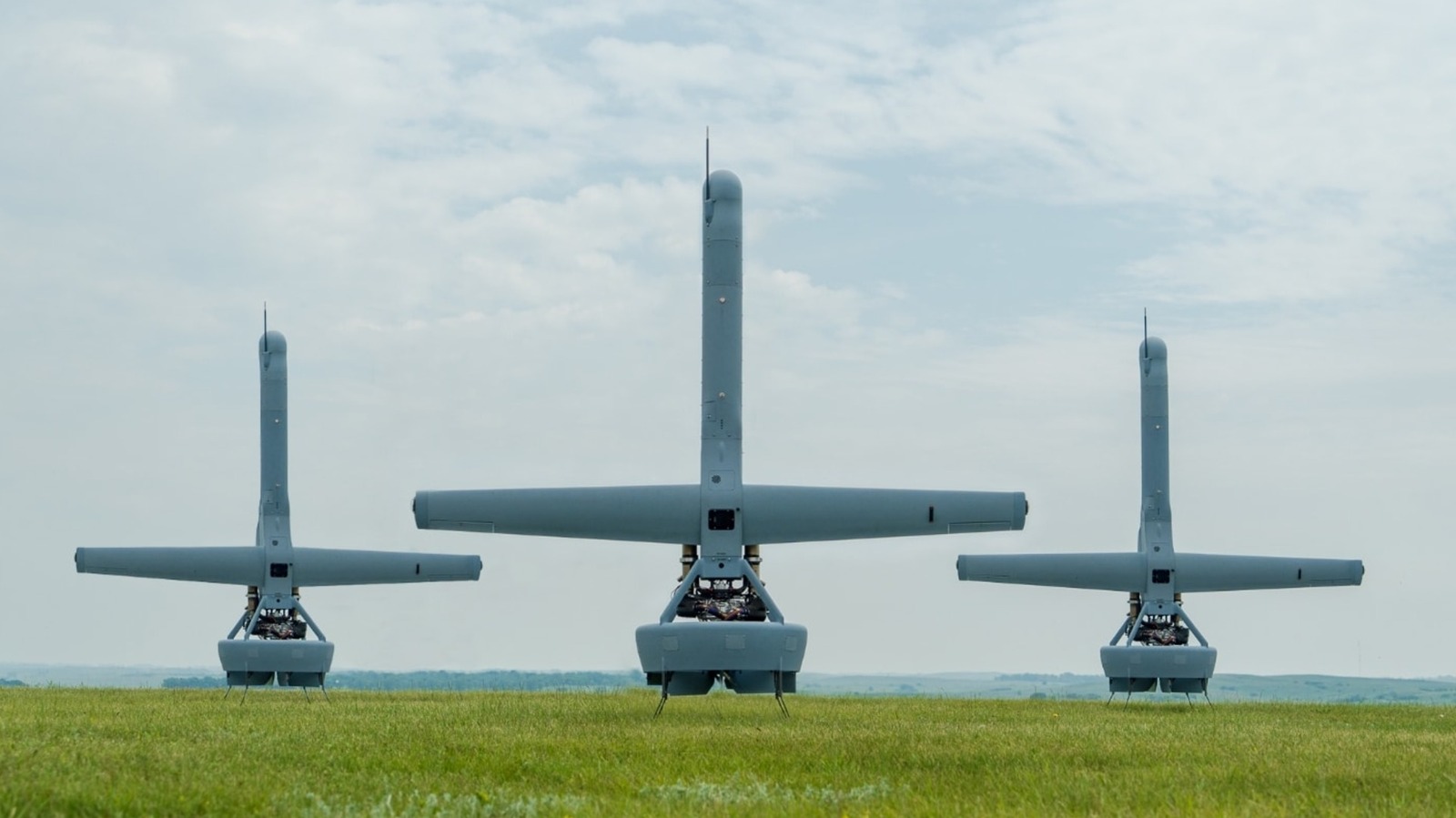







































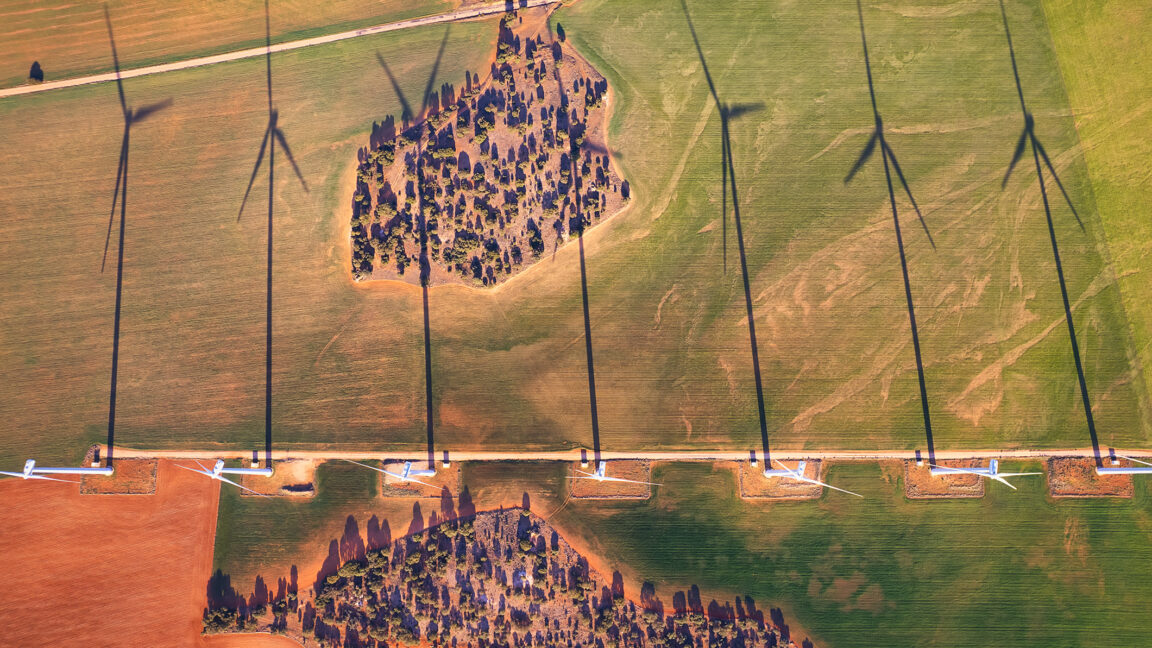
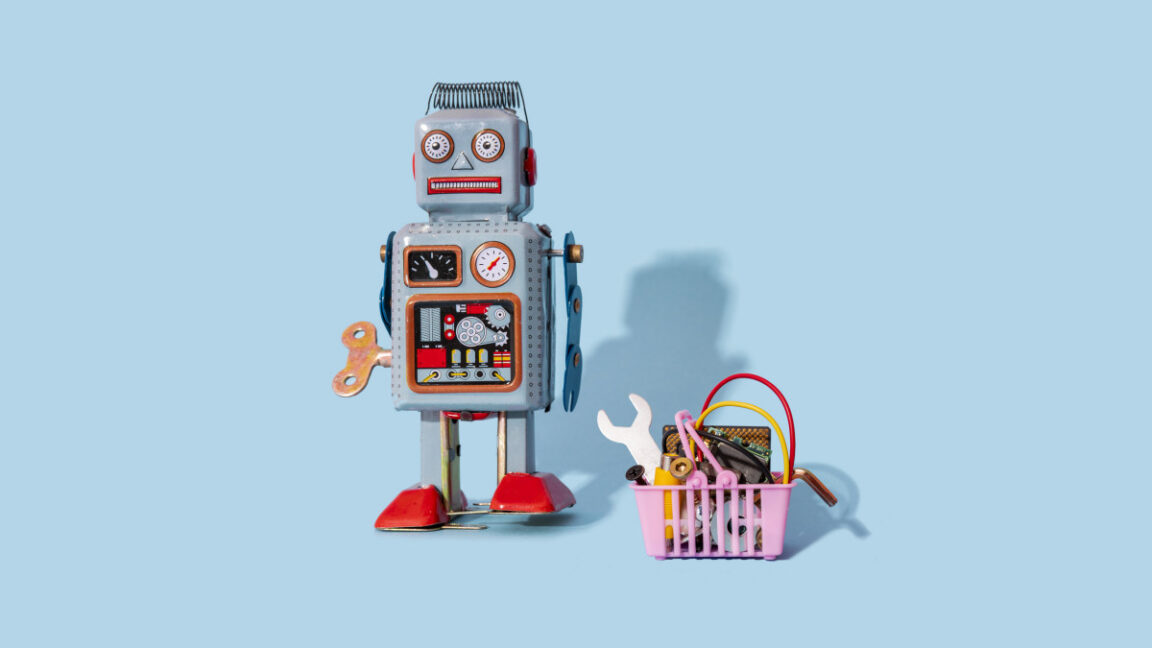














![macOS 15.5 beta 4 now available for download [U]](https://i0.wp.com/9to5mac.com/wp-content/uploads/sites/6/2025/04/macOS-Sequoia-15.5-b4.jpg?resize=1200%2C628&quality=82&strip=all&ssl=1)
















![AirPods Pro 2 With USB-C Back On Sale for Just $169! [Deal]](https://www.iclarified.com/images/news/96315/96315/96315-640.jpg)
![Apple Releases iOS 18.5 Beta 4 and iPadOS 18.5 Beta 4 [Download]](https://www.iclarified.com/images/news/97145/97145/97145-640.jpg)
![Apple Seeds watchOS 11.5 Beta 4 to Developers [Download]](https://www.iclarified.com/images/news/97147/97147/97147-640.jpg)
![Apple Seeds visionOS 2.5 Beta 4 to Developers [Download]](https://www.iclarified.com/images/news/97150/97150/97150-640.jpg)






































![Apple Seeds Fourth Beta of iOS 18.5 to Developers [Update: Public Beta Available]](https://images.macrumors.com/t/uSxxRefnKz3z3MK1y_CnFxSg8Ak=/2500x/article-new/2025/04/iOS-18.5-Feature-Real-Mock.jpg)
![Apple Seeds Fourth Beta of macOS Sequoia 15.5 [Update: Public Beta Available]](https://images.macrumors.com/t/ne62qbjm_V5f4GG9UND3WyOAxE8=/2500x/article-new/2024/08/macOS-Sequoia-Night-Feature.jpg)

























































